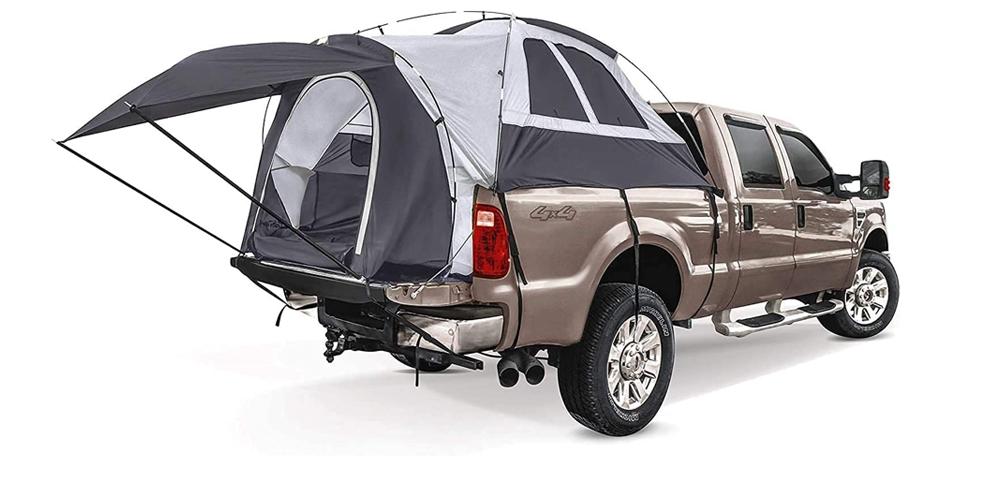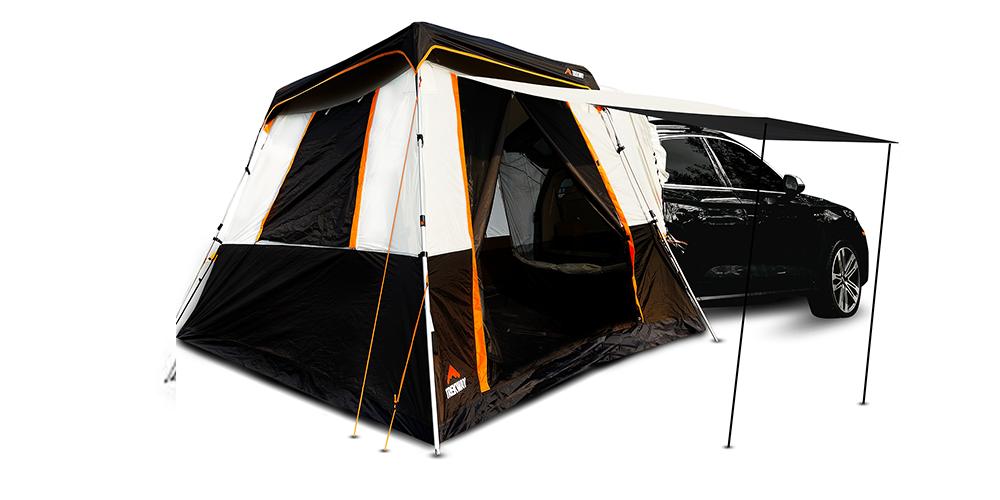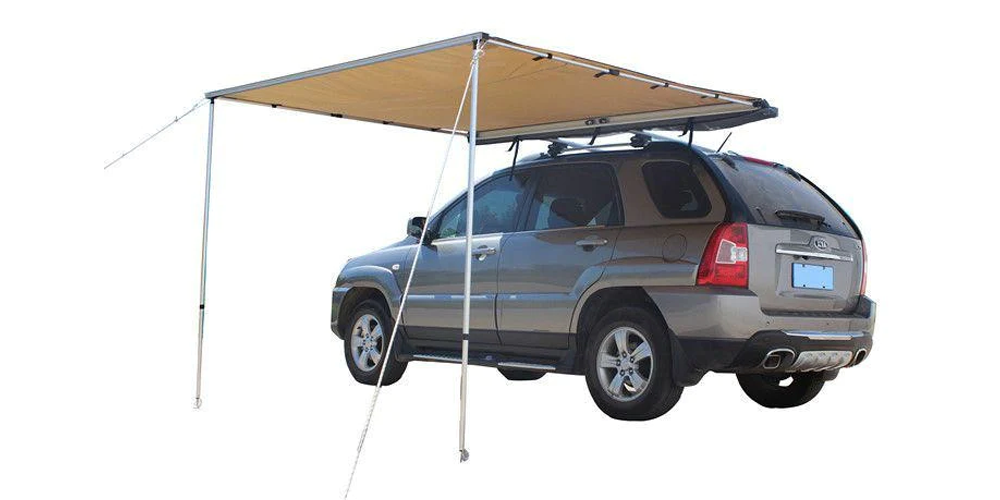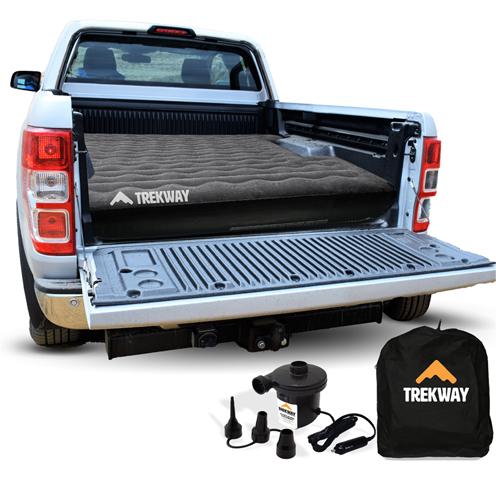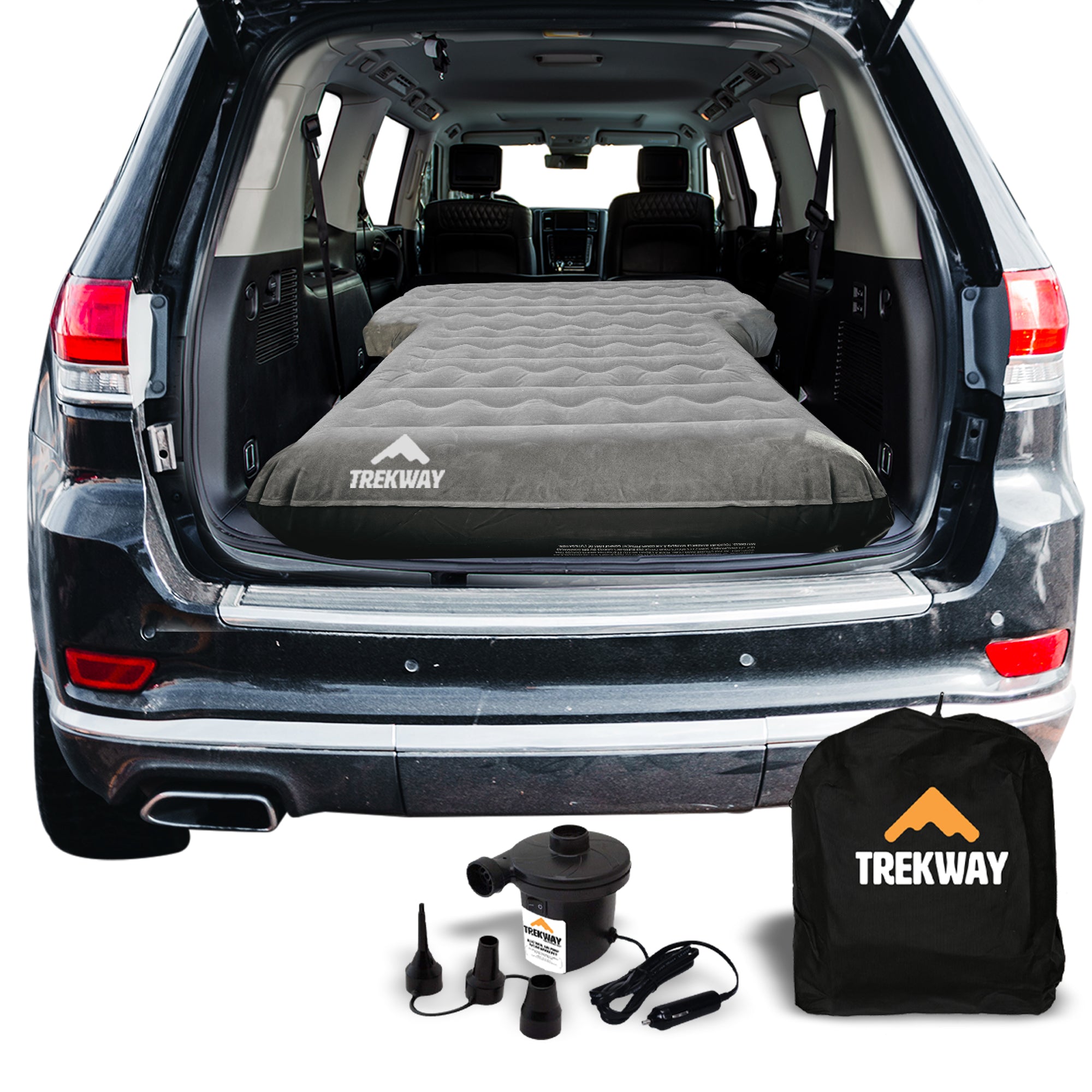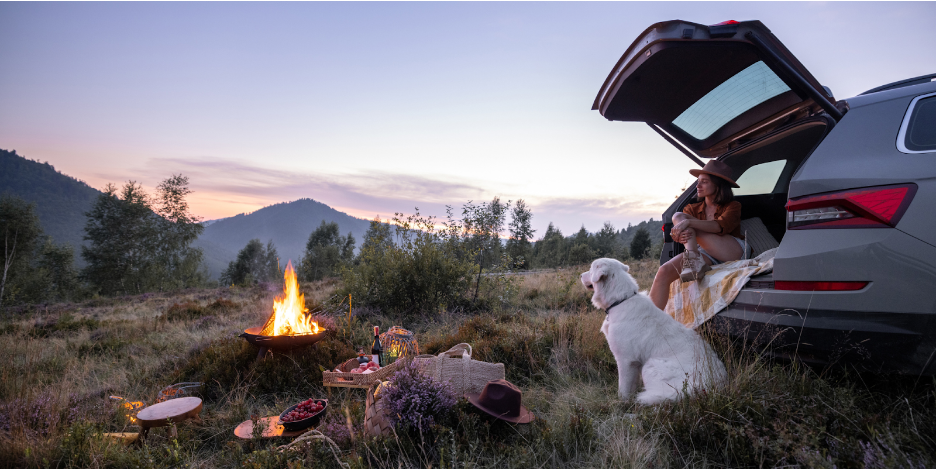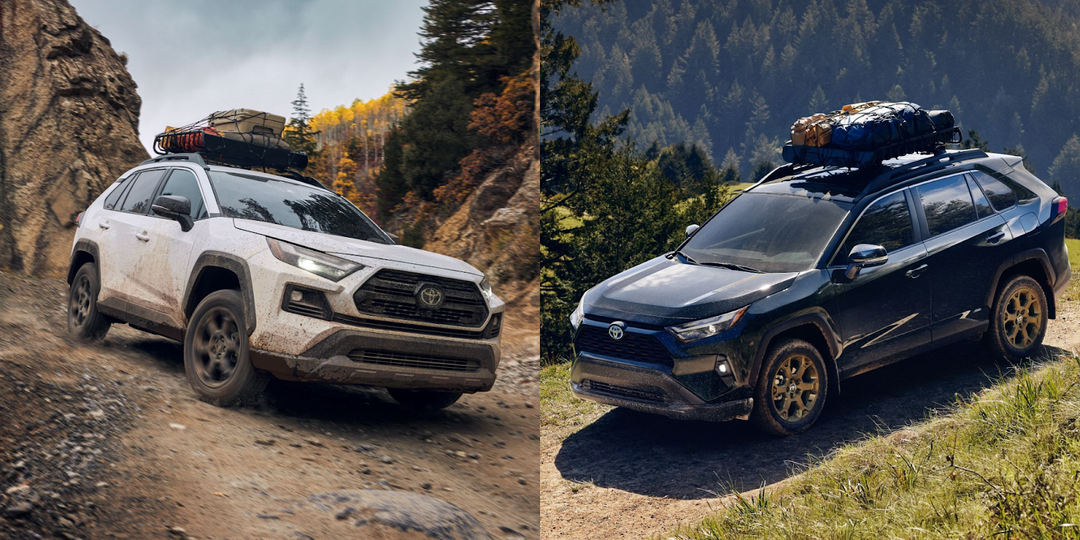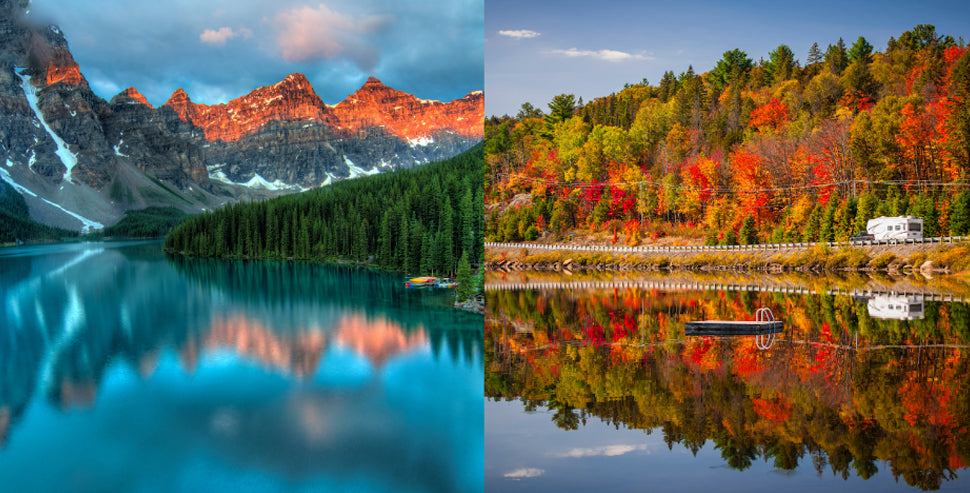Outback vs Forester: Which Subaru Is the Car Camper's Choice?
North America’s breathtaking landscapes, from the Atlantic cliffs to the serene Great Lakes, make it a camper's haven. But, as any seasoned camper knows, the choice of vehicle is as crucial as selecting the right camping spot.
When it comes to car camping, two Subaru models stand out for their adaptability to both urban commutes and off-the-beaten-path explorations:
The Subaru Outback and the Subaru Forester.
Both vehicles are heralded for their ruggedness, safety features, and all-wheel drive capabilities, making them favorites among outdoor enthusiasts. But when choosing between these two stalwarts for your camping excursions, the decision can be as challenging as a tricky trail in the backcountry.
Today, we’re looking at the features, performance, and capabilities of the Subaru Outback and Forester, providing you with the insights to determine which Subaru is the ultimate car camper's choice!
Subaru Outback: The Versatile Adventurer

The Outback has evolved from its origins as a variant of the Subaru Legacy into a unique blend of wagon comfort and SUV capability.
It's known for its spacious interior, advanced safety, and all-wheel-drive system, making it ideal for those seeking adventure without sacrificing comfort.
Over the years, it has been refined and redefined, adapting to the needs of modern drivers while maintaining its core strengths.
|
Generation |
Years |
Highlights |
|
1st |
1994 - 1999 |
Introduction of the Outback as a rugged version of the second-generation Legacy. |
|
2nd |
2000 - 2004 |
Based on the third-generation Legacy with more power and refined styling. |
|
3rd |
2005 - 2009 |
Improved comfort and ride, built on the fourth-generation Legacy platform. |
|
4th |
2010 - 2014 |
15th anniversary, robust chassis, improved safety, Motor Trend's Sport/Utility of the Year for 2010. |
|
5th |
2015 - 2019 |
Updated engines and transmissions, maintaining off-road capability and utility. |
|
6th |
2020 - Present |
Latest generation with advancements in technology, safety, and comfort. |
Subaru Forester: The Reliable Companion

The Subaru Forester debuted as a compact SUV with a practical boxy design, standard all-wheel drive, and an emphasis on safety and reliability.
Over the years, it has grown in size and sophistication, offering more interior space, advanced technological features, and improved off-road capability while retaining its reputation for durability and versatility.
The Forester appeals to families and outdoor enthusiasts alike, providing a comfortable and capable vehicle for daily use and adventurous getaways.
|
Generation |
Years |
Highlights |
|
1st (SF) |
1997 - 2002 |
Debut as a crossover SUV with a blend of Impreza features, higher seating position, and AWD. |
|
2nd (SG) |
2003 - 2008 |
New platform introduction at the Chicago Auto Show, inclusion of turbocharged engines. |
|
3rd (SH) |
2000 - 2013 |
Shift towards a more typical crossover SUV design, increased size, and ground clearance. |
|
4th (SJ) |
2014 - 2018 |
Complete redesign with larger interior space, CVT introduction, focus on ergonomics and comfort. |
|
5th (SK) |
2019 - Present |
Emphasis on refinement, comfort, and material quality, introduced at the New York International Auto Show. |
Outback vs Forester: Performance and Off-road Capability

When venturing into the heart of North America’s wilderness, your vehicle's performance can make all the difference between an exhilarating adventure and a challenging ordeal. Subaru has engineered both the Outback and Forester with features that cater to the demands of off-road terrain and unpredictable weather conditions.
|
Feature |
Outback (6th Generation) |
Forester (5th Generation) |
|
Engine |
Standard 2.5L Boxer (182 hp), Optional 2.4L Turbocharged (260 hp) |
Standard 2.5L Boxer (182 hp) |
|
Ground Clearance |
8.7 inches |
8.7 inches |
|
Off-road Features |
X-MODE, Hill Descent Control |
X-MODE, Hill Descent Control |
Symmetrical All-Wheel Drive
At the core of both the Subaru Outback and Forester lies the Symmetrical All-Wheel Drive system, designed to provide optimal balance and an even distribution of power for maximum traction. This system is especially beneficial on the slippery, mud-slicked backroads or snow-covered paths common in North America, ensuring stability and confidence on diverse terrains.
Ground Clearance
With an impressive 8.7-inch ground clearance, both the Outback and Forester are well-equipped to handle rough trails and unexpected obstacles. This elevated stance protects the undercarriage from damage and offers a better view of the road ahead, making it easier to navigate challenging paths.
Engine Power
Under the hood, the Outback and Forester share a standard 2.5-liter four-cylinder Boxer engine, delivering 182 horsepower and a robust performance that can handle the demands of outdoor escapades.
For those who seek an extra boost, the Outback offers an optional 2.4-liter turbocharged engine, ramping up the power to 260 horsepower, providing the strength needed for steep ascents and heavy loads.
Fuel Efficiency
Despite their rugged capabilities, both models are surprisingly fuel-efficient, a critical factor for long camping trips where gas stations might be few and far between.
This efficiency ensures that you can explore further and enjoy more of North America’s great outdoors without worrying about frequent fuel stops.
Outback vs Forester: Towing and Storage

When it comes to car camping, how much you can bring and tow directly impacts the quality and comfort of your outdoor experience. Both the Subaru Outback and the Subaru Forester offer commendable storage and towing capabilities, but some differences might sway your decision depending on your camping style and needs.
|
Feature |
Outback (6th Generation) |
Forester (5th Generation) |
|
Towing Capacity |
Up to 3,500 pounds (with turbocharged engine) |
Up to 1,500 pounds |
|
Cargo Space |
32.5 cubic feet (expands to 75.7 cubic feet) |
28.9 cubic feet (expands to 74.2 cubic feet) |
|
Roof Rails |
Standard |
Standard |
|
Interior Storage |
Ample space with flexible seating arrangements |
Slightly more passenger space, versatile cargo area |
Towing Capacity
The Outback, with its optional 2.4-liter turbocharged engine, boasts a towing capacity of up to 3,500 pounds, ideal for hauling larger trailers or campers, thereby enhancing your adventure possibilities. In contrast, the Forester's towing limit is 1,500 pounds, sufficient for various trailers and gear but less suited for heavier loads.
Cargo Space
Both models offer significant cargo space, with the Outback providing slightly more room behind the second row. When rear seats are folded, both vehicles offer similar expansive spaces, accommodating a wide range of camping essentials and more.
Roof Rails
Equipped with standard roof rails, the Outback and Forester are ready for extra gear. These rails support additional cargo solutions, such as carriers or bike racks, increasing the vehicles' utility and storage capacity for outdoor adventures.
Outback vs Forester: Comfort and Technology
Camping adventures often involve long drives, possibly through varied and challenging terrains. The comfort and technological features of your vehicle can significantly influence the overall experience, not just for the driver but for all passengers.
Both the Subaru Outback and the Subaru Forester are designed with these aspects in mind, offering a range of features aimed at enhancing comfort and connectivity.
|
Feature |
Outback (6th Generation) |
Forester (5th Generation) |
|
Seating Comfort |
Spacious with available power adjustments, heating, and ventilation. |
Elevated seating for enhanced visibility, with available heating. |
|
Infotainment Display |
Standard 7-inch or available 11.6-inch touchscreen. |
Standard 6.5-inch or available 8-inch touchscreen. |
|
Connectivity |
Apple CarPlay, Android Auto, and available navigation. |
Apple CarPlay, Android Auto, and available navigation. |
|
Safety Technology |
EyeSight Driver Assist Technology standard. |
EyeSight Driver Assist Technology standard. |
Comfort and Ergonomics
The Outback, with its slightly larger dimensions, offers a bit more cargo space and a more extensive infotainment screen, catering to those who appreciate a more tech-forward environment and additional room for gear.
Meanwhile, the Forester's elevated seating position not only enhances visibility but also creates a sense of spaciousness within the cabin, making it ideal for drivers who prefer a more commanding view of the road.
Technology and Connectivity
When it comes to tech, both vehicles are well-equipped with Subaru's Starlink multimedia system, ensuring that connectivity and entertainment are always within reach.
The Outback's available 11.6-inch touchscreen stands out for those who value larger displays for navigation and multimedia control.
Meanwhile, Forester's standard infotainment offerings provide all the essentials, including smartphone integration via Apple CarPlay and Android Auto, making it a practical choice for tech-savvy users.
Safety and Driver Assistance
Safety is paramount in both models, with Subaru's EyeSight Driver Assist Technology standard across the board.
This suite of safety features, including adaptive cruise control and pre-collision braking, enhances the driving experience by providing an extra layer of protection, particularly valuable on long drives and in unpredictable conditions.
Outback vs Forester: Pros and Cons
Each Subaru model presents its own set of advantages and considerations, tailored to different types of adventurers and their unique needs. Let’s take a look at each model’s pros and cons, to help you better identify which solution is best for you!
Subaru Outback: The Adventurer's Companion
The Subaru Outback’s design caters to the adventurous soul, offering a comfortable ride, ample cargo space, and the power needed to traverse the diverse Canadian landscapes.
|
Pros |
Cons |
|
|
Subaru Forester: The Practical Explorer
The Subaru Forester is the quintessential vehicle for practical explorers who prioritize comfort, efficiency, and reliability on their outdoor adventures. It's built to handle the unpredictability of Canadian terrains while providing a comfortable haven for its passengers.
|
Pros |
Cons |
|
|
Wrapping Up
Choosing the right Subaru for your camping adventures boils down to what you need most on the trail. If you're after power and space, the Outback's got you covered with its hefty towing capacity and roomy interior.
Prefer something a bit more nimble but still roomy? The Forester is your go-to, offering great efficiency and plenty of space for your crew and gear. Whichever you pick, both the Outback and Forester are ready to tackle Canada's great outdoors with Subaru's trademark reliability and capability.
Happy camping!
